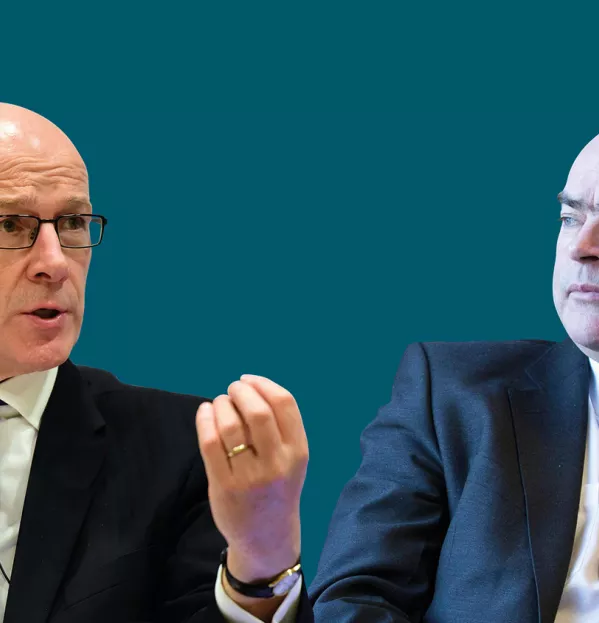Will Swinney’s pay proposal be enough to stop teacher strikes?

If Scotland’s councils don’t table a new pay offer that is acceptable to teachers, the country could soon be facing its first national teacher-led strike since the 1980s.
With the EIS, Scotland’s biggest teaching union, preparing for a strike ballot, the education secretary, John Swinney, has announced that he has proposed a new pay deal to the councils’ umbrella body, Cosla. Will the local authorities accept it and put it forward to the EIS? And, more importantly, will the teachers find the offer satisfactory?
Here, Swinney and the general secretary of the EIS, Larry Flanagan, have their say.
‘Pay offer shows the government’s commitment to retaining teachers’
We believe that teachers deserve a fair pay rise; that is what everyone is working towards.
I recognise the strength of the rejection of the previous pay offer and, in order to make any new offer as attractive as possible, the Scottish government is prepared to improve its contribution around main grade restructuring and revaluation of all other Scottish Negotiating Committee for Teachers pay scales. This is a clear indication of the shared commitment between the Scottish government and local government to recruit and retain teachers.
I have proposed to the EIS that teachers would receive a minimum 9 per cent increase between January 2018 and April 2019 and a further 3 per cent rise in April 2020. Any offer can only be made by local authorities, as your employers, so if Cosla agrees to this new proposal, I believe this would result in a materially improved offer that unions should put to their members. With support from teachers, it would be possible to bring discussions to a conclusion.
Outwith the issue of pay, work continues apace, in and out of the classroom, to ensure that every child has the same opportunity to succeed. We want Scotland to be the best place in the world to grow up, and teachers are on the front line when it comes to making a difference for every child across the country.
That is why we are doing everything we can to empower the profession.
John Swinney is deputy first minister and cabinet secretary for education and skills
‘We’ll suspend our ballot if councils being the new deal to the table’
The EIS had been very clear during all discussions in highlighting that we would open an industrial action ballot early in 2019 should no improved offer be made to teachers. We issued formal notice to employers last week, and will open the ballot at the end of this month if no new offer is forthcoming from employers.
There is, of course, the prospect of a revised offer before the ballot opens. The cabinet secretary has written to the EIS, outlining his proposal for funding an enhanced offer. However, it is important to remember that this proposal is not yet a formal offer.
Teachers are employed by local authorities, so, while the Scottish government plays an important part in negotiations via the Scottish Negotiating Committee for Teachers, only local authorities can actually make a pay offer to teachers.
This week, Cosla leaders will meet and decide whether or not to make the improved pay offer to teachers. Should they decide to make the offer, the EIS will suspend the planned strike ballot while it consults its members on the new offer. In the event that Cosla declines to make a new offer, we will proceed with balloting our members for strike action.
At every stage, the “Value Education, Value Teachers” campaign has been led by EIS members. This will continue to be the case. It will be for teachers to decide if they find any new offer acceptable or if the ballot on strike action should move forward.
Larry Flanagan is general secretary of the EIS teaching union
You need a Tes subscription to read this article
Subscribe now to read this article and get other subscriber-only content:
- Unlimited access to all Tes magazine content
- Exclusive subscriber-only stories
- Award-winning email newsletters
Already a subscriber? Log in
You need a subscription to read this article
Subscribe now to read this article and get other subscriber-only content, including:
- Unlimited access to all Tes magazine content
- Exclusive subscriber-only stories
- Award-winning email newsletters